Have you ever filled a glass from your kitchen tap and wondered, “Is Montana tap water safe to drink?” It’s a question that might cross your mind as you gaze out at the state’s vast, rugged landscapes and the crystal-clear rivers cutting through them.
You’re about to embark on a journey through the complex world of Montana’s tap water, where I’ll guide you through its quality, potential contaminants, and the measures in place to ensure its safety.
From the role of the Montana Department of Environmental Quality in safeguarding our water to the common contaminants that may lurk unseen, I’ll share with you the key takeaways on water safety.
- Related article: Montana Travel Suggestions
If you’re a Montana resident, a prospective visitor, or just someone passionate about water quality, this article is tailored for you. Stay tuned, because what you’re about to read could change the way you think about every sip you take.
7 Key Takeaways on Montana Tap Water
- Montana’s tap water is generally safe to drink, but its quality can vary by source and location.
- The Montana Department of Environmental Quality (DEQ) offers water quality reports for public water systems, providing valuable information on composition and contaminants.
- Common contaminants in Montana tap water include arsenic, bromodichloromethane, chloroform, chromium (hexavalent), dibromochloromethane, dichloroacetic acid, and hormones.
- Long-term exposure to certain contaminants, like arsenic and hexavalent chromium, can increase the risk of cancer.
- Montana’s public water systems are regularly tested to meet federal and state regulations, but private wells are not subject to the same guidelines.
- Precautions such as using water filters and staying informed through water quality reports can help mitigate potential risks.
- While some contaminants exceed health guidelines, the concentrations in Montana’s tap water are generally low, but it’s still important to take precautions for your health.
Montana Tap Water: How Safe Is It?
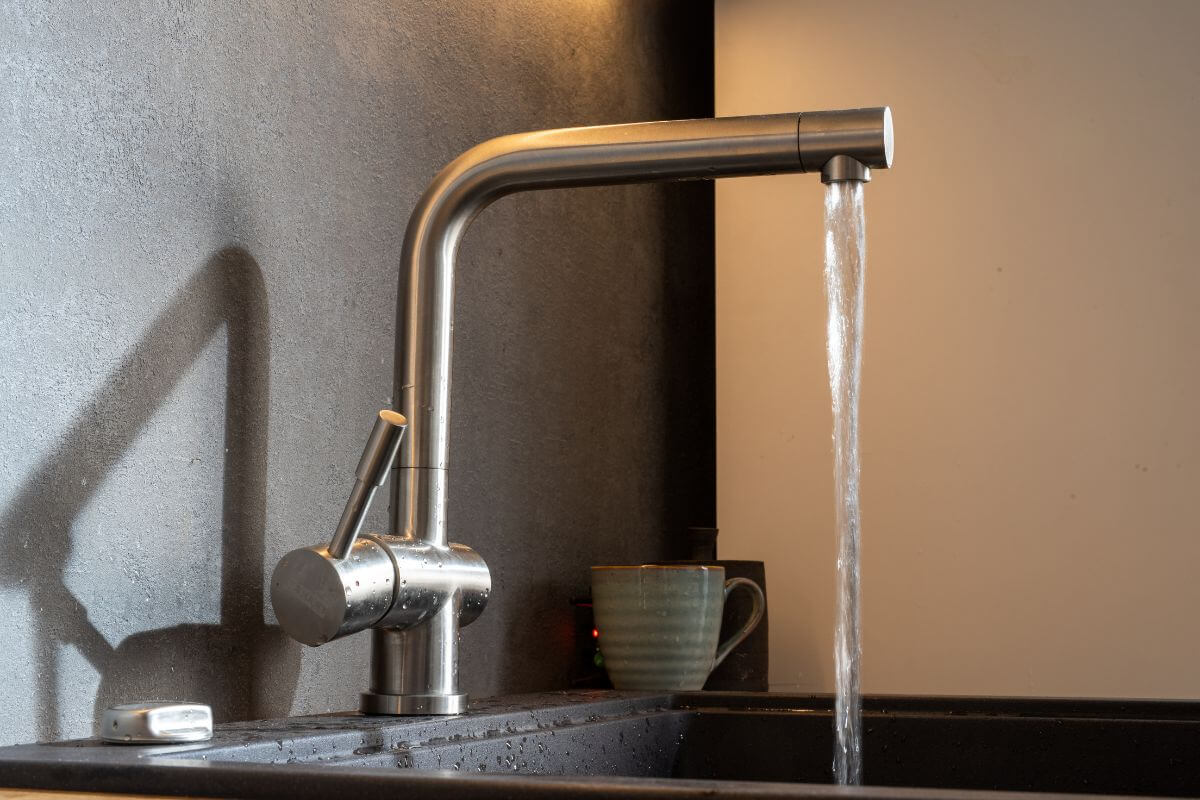
Montana’s tap water is generally considered safe to drink, with a regulatory system in place to ensure it meets federal and state standards. However, like anywhere else, the water’s quality can vary depending on the source and location.
For instance, the city of Bozeman has received accolades for its tap water, ranking as the best in the state and third-best in North America for taste. But what about other areas?
To get a more accurate picture of the water quality in Montana, the Montana Department of Environmental Quality (DEQ) offers water quality reports for public water systems.
These reports are a treasure trove of information, shedding light on everything from chemical composition to potential contaminants. I’ve found them incredibly useful in understanding the tap water in my area.
So, if you’re concerned or just curious about your tap water’s quality, I’d highly recommend checking your local utility’s water quality report.
Armed with this knowledge, you can make informed choices, whether it’s installing a filter or simply enjoying a refreshing glass of Montana’s finest. This should be one of your safety considerations when visiting Montana if you want to stay healthy during your travels.
Guidelines for Safe Drinking Water in Montana
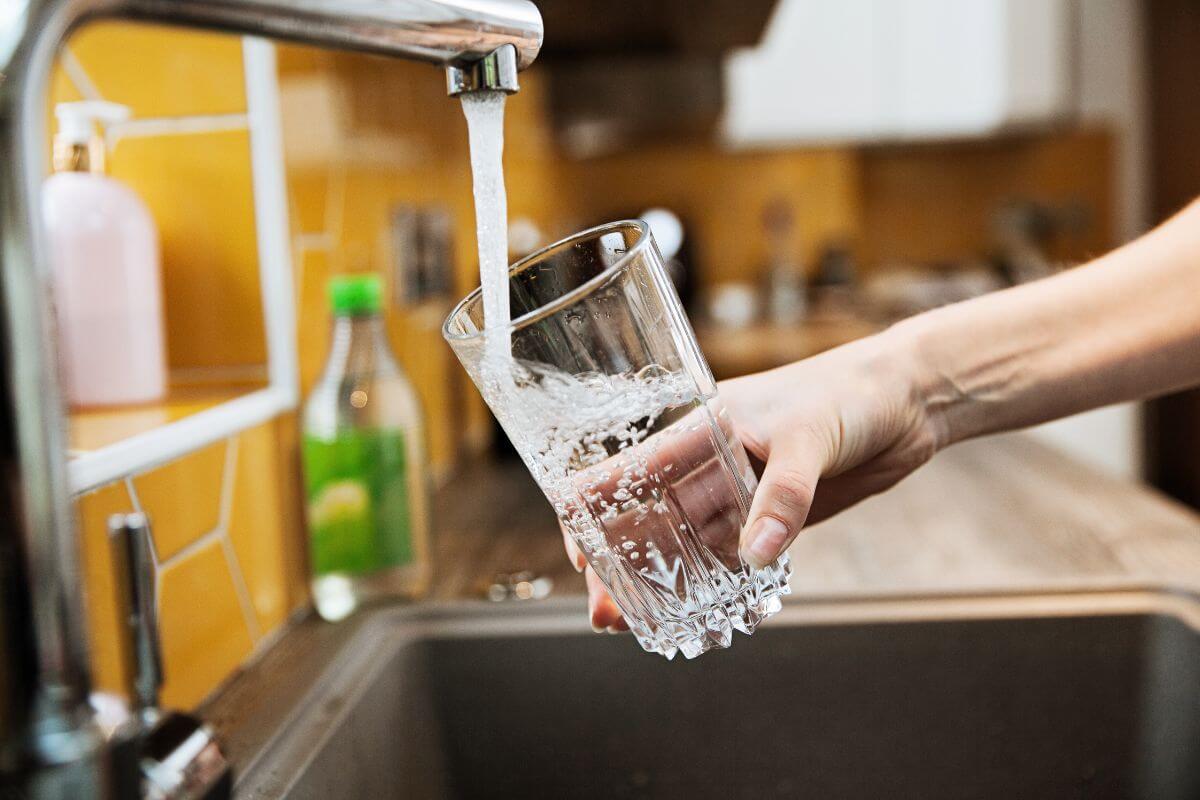
When it comes to the quality of water flowing from your tap in Montana, you can rest assured that it’s not a Wild West situation. The health guidelines for safe drinking water in this state are primarily regulated by the Public Water Supply Bureau at the Montana Department of Environmental Quality (DEQ).
These guidelines ensure compliance with the federal Safe Drinking Water Act and apply to public water systems, including cities, towns, water districts, subdivisions, and businesses. Here’s what you need to know about these health guidelines and how they impact your water-drinking experience in the Treasure State:
- Public Water Systems – Legally, these entities are defined as providing water to 25 or more people for over 60 days a year or having 15 or more service connections. In Montana, this encompasses cities, towns, water districts, subdivisions, HOAs, campgrounds, restaurants, bars, and other businesses.
- Regulations – The Public Water Supply Bureau at DEQ regulates public water systems in Montana to ensure that the water being served meets the federal Safe Drinking Water Act and state laws and regulations.
- Private Wells – These are not regulated under these regulations.
- Testing – The number of people served, the type of source water, and the type of contaminants determine the frequency of drinking water testing.
- Compliance – Compliance and reporting are critical to maintaining Montana’s public water supply.
- Drinking Water Regulations – These include microbiological requirements, chemical requirements, disinfectants and disinfection byproducts, fluoride addition, public notification requirements, and consumer confidence reports.
- Water Quality Standards – These are enacted by the Montana State Legislature.
- Specific Rules – These include the Chlorination Rule, Consumer Confidence Report (CCR) Rule, Cross Connection Rule, Disinfection Byproducts Rule, Groundwater Rule, Groundwater under the direct influence of surface water (GWUDISW), and Lead and Copper Rule.
It’s important to note that these regulations apply to public water systems. If you rely on a private well, they don’t fall under the same guidelines. In that case, you may want to consider periodic testing to ensure your water is up to snuff.
In a state as pristine as Montana, where the rivers run clear and the air is crisp, it’s only fitting that the water we drink meets the same high standards.
Common Contaminants Found in Montana Tap Water
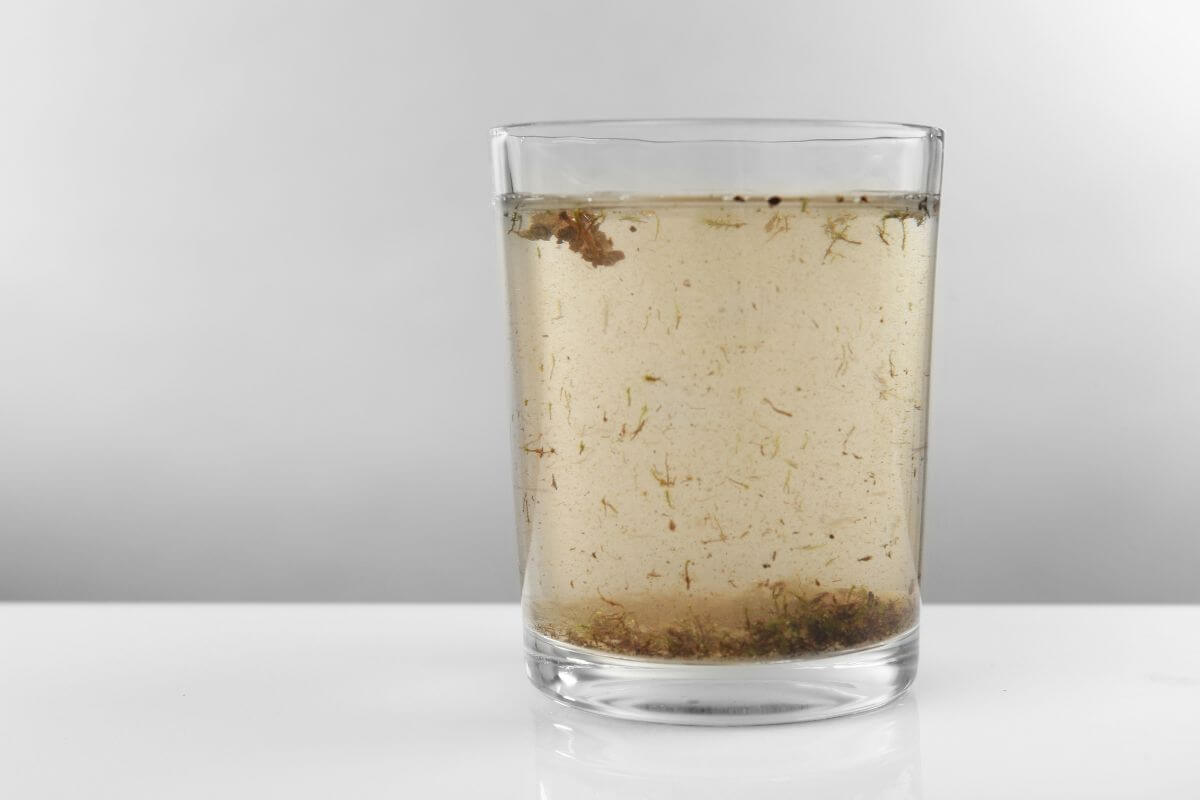
Montana’s pristine landscapes may evoke images of crystal-clear creeks, but the reality is that even the Big Sky Country isn’t immune to certain water contaminants. While the state’s water quality is generally high, it’s essential to be aware of potential issues.
Here’s a closer look at some of the most common contaminants found in Montana tap water, so you can take the necessary precautions to keep yourself and your family safe.
1. Arsenic
Montana’s natural geology makes it one of the states where arsenic occurs in the environment, primarily due to specific soil and bedrock compositions.
However, it’s not just nature at play here. Human activities such as apple orchard spraying, coal ash disposal, and the use of pressure-treated wood have also contributed to the presence of this element in both soil and water sources.
Why should you care? Well, arsenic is a silent intruder. You won’t be able to detect it by taste, smell, or color in your tap water.
The only way to identify its presence is through laboratory analysis. And here’s the kicker: long-term exposure to arsenic through drinking water has been linked to an increased risk of cancer.
Studies have shown that chronic exposure to arsenic heightens the likelihood of developing skin, bladder, and lung cancers. There are even indications that prolonged exposure could increase the risks of kidney and prostate cancers.
But thankfully, most public water systems in Montana regularly test for arsenic levels and treat the water accordingly. However, if you have a private well or are unsure about the quality of your tap water, it’s crucial to get it tested for arsenic. Don’t take any chances when it comes to your health.
2. Bromodichloromethane
Testing by an independent third party has shed light on a concerning issue: Bromodichloromethane levels in our tap water. This compound, a type of total trihalomethane (TTHM) formed during water treatment, has been found to exceed recommended levels.
Why is this a concern? Well, drinking tap water contaminated with Bromodichloromethane can pose serious risks to your health. Studies have shown an increased likelihood of cancer, potential harm to your kidneys and liver, and even complications during pregnancy.
Recent animal studies have indicated that consuming substantial amounts of this chemical can lead to liver and kidney damage. The good news is that this information isn’t meant to scare you off from tap water altogether. Instead, it’s a call to action to take extra precautions.
What can you do?
- Consider investing in a water filter that specifically targets TTHMs like Bromodichloromethane.
- Stay updated on local water quality reports and any ongoing efforts to mitigate this issue.
- If you’re pregnant, consult your doctor about the best water sources during this crucial time.
Remember, knowledge is power. By being aware of the potential risks, you can make well-informed choices about your drinking water and take steps to safeguard your health.
3. Chloroform
Chloroform is a sneaky byproduct that can sometimes hitch a ride in your glass of tap water. You might recognize it from crime dramas, but in reality, chloroform is a component of total trihalomethanes (TTHMs) that can form during the disinfection process of treating tap water with chlorine.
Chloroform primarily comes from industrial sources like chemical companies and paper mills, as well as wastewater from sewage treatment plants. When chlorine, the common disinfectant, does its job of eliminating bacteria, it can inadvertently produce chloroform in small quantities.
So, is the chloroform in your tap water something to worry about? While it’s not ideal, the good news is that an independent third-party assessment found that Montana’s tap water generally surpasses health benchmarks for chloroform levels.
However, it’s important to note that drinking water contaminated with chloroform does pose health risks. Studies on animals have shown that prolonged ingestion of large quantities of chloroform can lead to liver and kidney cancer.
The big question mark is whether the same risks apply to humans exposed to chloroform in drinking water over extended periods. While the evidence isn’t conclusive, it’s always wise to err on the side of caution.
Here are a few actionable tips to minimize your exposure to chloroform in tap water:
- Consider Using a Water Filter – A quality activated carbon filter can help reduce chloroform levels in your tap water.
- Opt for Cold Water – Chloroform levels tend to be higher in warm or hot water, so stick to cold water for drinking and cooking whenever possible.
- Ventilate Your Bathroom – Chloroform can be released into the air during hot showers. Make sure your bathroom is well-ventilated to minimize inhalation.
By staying informed and taking simple precautions, you can continue to enjoy the many benefits of this beautiful state while safeguarding your health.
4. Chromium (Hexavalent)
During my deep dive into the state of Montana’s tap water, one alarming discovery stood out: the presence of hexavalent chromium. You might recognize this toxic compound from the famous legal battle in Hinkley, California, as depicted in the movie “Erin Brockovich.”
Hexavalent chromium, also known as chromium-6, is a known carcinogen that can seep into drinking water from industrial pollution or natural sources like mineral deposits and groundwater. A 2008 study by the National Toxicology Program revealed that chromium-6 induced cancer in laboratory animals.
And it doesn’t stop there, the California Office of Environmental Health Hazard Assessment has concluded that it can pose a cancer risk to humans as well. Here’s what you can do:
- Test Your Water – Reach out to your local water utility or consider using a home water testing kit to check for chromium-6 levels.
- Install a Filtration System – If your water tests positive for elevated levels of chromium-6, investing in a water filtration system that specifically targets this contaminant is a wise move.
- Stay Informed – Keep an eye on annual water quality reports from your utility. They often include information on chromium levels and any necessary precautions.
Montana’s natural beauty is unparalleled, but it’s crucial to be aware of potential health hazards lurking in our everyday routines. By taking these precautions, you can ensure that your hydration habits don’t come with an unwanted side of hexavalent chromium.
5. Dibromochloromethane
Let’s talk about dibromochloromethane (DBCM), a compound you probably haven’t heard much about. Independent studies have shown that this chemical has been detected in some Montana tap water samples, albeit in trace amounts.
Dibromochloromethane is part of a group of chemicals called trihalomethanes (TTHMs). It was once used in the production of fire extinguisher fluids, spray can propellants, and even pesticides. However, its usage is now limited to lab settings.
DBCM doesn’t occur naturally in liquid form; it’s either dissolved in water or evaporated into the air as a gas. The most common way it enters water sources is through the breakdown of organic matter, like decaying leaves or algae, during the water treatment process.
Animal studies have shown that prolonged exposure to high levels of DBCM can lead to liver and kidney cancer. It’s important to note that these studies used much higher doses than what you’d typically find in tap water. However, it’s still a good idea to avoid prolonged exposure to high levels of this chemical.
If you’re concerned, you can take some simple steps to reduce your exposure:
- Use a water filter certified to remove trihalomethanes.
- Opt for cold water when cooking or drinking, as DBCM levels are typically lower in cold water.
- Consider alternate sources of drinking water, like bottled water or water delivery services.
Montana’s water utilities are well aware of the presence of DBCM and are actively monitoring and treating water to keep levels in check. As a consumer, you have options to further ensure the quality of your drinking water. It’s always good to stay informed and make choices that align with your comfort level.
6. Dichloroacetic Acid
You might be surprised to learn that your tap water could contain a compound called Dichloroacetic Acid (DCA), which exceeds health guidelines. DCA is a member of the chloroacetic acids family and one of the five haloacetic acids.
While DCA does have medical applications, such as in cancer treatment, its presence in your water is a result of the chlorination process. If you’re wondering how it gets there, improper waste disposal from pharmaceutical factories is one possible source.
The health risks of consuming tap water contaminated with DCA are significant, with potential impacts on cancer development, reproductive issues, child development, liver and kidney damage, complications during pregnancy, and problems related to eyes and nerves, as suggested by studies.
It’s important to note that DCA is typically found in trace amounts in municipal water supplies. However, the fact that it exceeds health guidelines means it’s worth paying attention to. If you’re concerned, consider using a water filter specifically designed to remove haloacetic acids.
Here’s a quick rundown about Dichloroacetic Acid:
- DCA is a byproduct of the chlorination process.
- Improper waste disposal by pharmaceutical factories can contribute to its presence in water systems.
- Health risks associated with DCA include potential effects on cancer development, reproductive issues, and more.
- The compound is commonly found in municipal water but typically in trace amounts.
- Water filters designed to remove haloacetic acids can offer an extra layer of protection.
Your health is paramount, so if you’re worried, it’s always a good idea to consult local water authorities or consider getting your tap water tested.
7. Hormones
The notion of our tap water containing traces of human sex hormones may seem like a plot twist in a sci-fi movie. However, according to third-party testing, Montana’s water utility occasionally surpasses health guidelines due to the presence of hormones like testosterone and estrogen.
These hormones can find their way into the water from various sources, including farms, pharmaceutical production, and incomplete wastewater treatment. But before you start picturing a hormone-laced drinking fountain, it’s important to note that the concentrations detected are typically low.
While this might sound reassuring, the truth is there are no established standards or long-term studies to determine the risks of these hormones in our drinking water. Surprisingly, the Environmental Protection Agency (EPA) doesn’t currently provide guidelines to assess the safety or potential risks of hormone exposure through water.
So, what’s the big deal? These hormones, when present as endocrine disruptors in our water, can interfere with our natural hormone systems. In turn, this may affect our reproductive systems, potentially reducing fertility and increasing developmental abnormalities in infants.
Endocrine disruptors have also been associated with an elevated risk of cancer and disturbances in immune and nervous system functions.
The takeaway here is that while the presence of hormones in your glass of tap water might be a fascinating factoid, it’s crucial to recognize the uncertainties surrounding their long-term effects on human health.
8. Total Trihalomethanes (TTHMs)
Here’s a fact that might make you pause the next time you fill your glass from the tap: third-party testing has revealed that Montana’s tap water, while generally safe, can sometimes contain elevated levels of Total Trihalomethanes (TTHMs).
You might be wondering, what on earth are TTHMs? Well, they’re byproducts that form when chlorine, commonly used to disinfect water, reacts with natural organic matter.
Because studies have linked increased TTHM levels to a range of health concerns. A higher risk of cancer and reproductive issues.
But here’s the kicker: recent research suggests that the absorption of TTHMs through the skin and inhalation during activities like showering can result in even higher concentrations in the blood than simply drinking the water.
Global studies have shown a correlation between elevated TTHMs and increased cancer rates. Animal research has even indicated tumor induction in the liver, kidneys, and intestines due to exposure to these compounds.
So, what can you do to minimize your risk? A few simple steps go a long way:
- Consider using a water filter that specifically targets TTHMs.
- When taking a shower or bath, keep the bathroom well-ventilated to reduce inhalation.
- Opt for shorter showers to limit your exposure time.
While Montana’s tap water is generally safe, it’s always a good idea to be aware of any potential risks and take steps to safeguard yourself and your family.
9. Trichloroacetic Acid
Here’s something you probably haven’t heard: Montana’s tap water has a secret ingredient called Trichloroacetic Acid (TCAA). Independent testing has revealed that this chemical, formed from natural reactions with disinfectants, can sometimes exceed health guidelines.
What’s the big deal? Well, TCAA is one of the regulated haloacetic acids by federal standards. In other words, it’s not just some random compound; it’s a known drinking water contaminant that we should be aware of.
The risks associated with TCAA in your drinking water are no joke. Prolonged exposure beyond the “Maximum Contaminant Levels” set by the EPA can heighten your risk of cancer.
Yes, you read that right. Long-term exposure to TCAA has been linked to tumor development. If you’re pregnant or planning to be, this is especially important for you.
Studies suggest that TCAA could potentially cause developmental issues in the fetus if you’re exposed to this chemical during pregnancy. By being aware of the potential risks of TCAA and taking appropriate measures, you can enjoy a safer and healthier hydration experience in Big Sky Country.
Best Type of Filters to Remove Contaminants
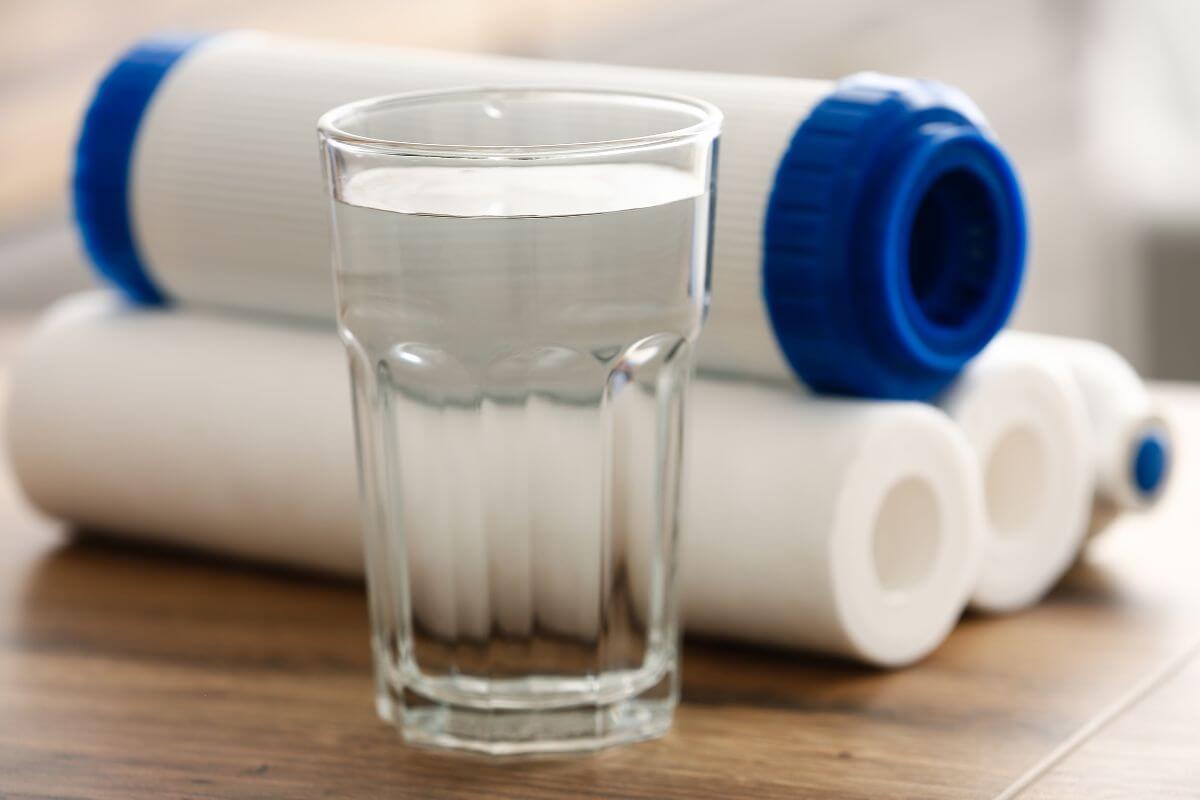
When it comes to filtering your Montana tap water, two popular options stand out: Granular Activated Carbon (GAC) filters and Solid Block Carbon filters.
- GAC Filters – Think of GAC as loose carbon granules that water flows through. These filters force water through these granules, trapping contaminants along the way.
- Solid Block Carbon Filters – On the other hand, Solid Block Carbon filters are made by compressing activated carbon under heat and pressure. This results in solid walls and multiple layers of carbon that water must navigate through.
Both filters use carbon ground into small particulate sizes, but Solid Block Carbon is ground 7 to 19 times smaller than GAC.
So, why choose one over the other?
- GAC filters are inexpensive and straightforward to manufacture, making them a popular choice for many water filtration companies.
- Solid Block Carbon filters, while costlier and taking longer to produce, offer superior contaminant removal. The water’s strenuous path through the compressed carbon enhances the filtration process, resulting in better water quality.
If you’re looking for a budget-friendly option that still gets the job done, GAC filters are a solid choice. However, if you want top-notch filtration that leaves no room for doubt, Solid Block Carbon filters are the way to go.
Montana Tap Water Final Thoughts
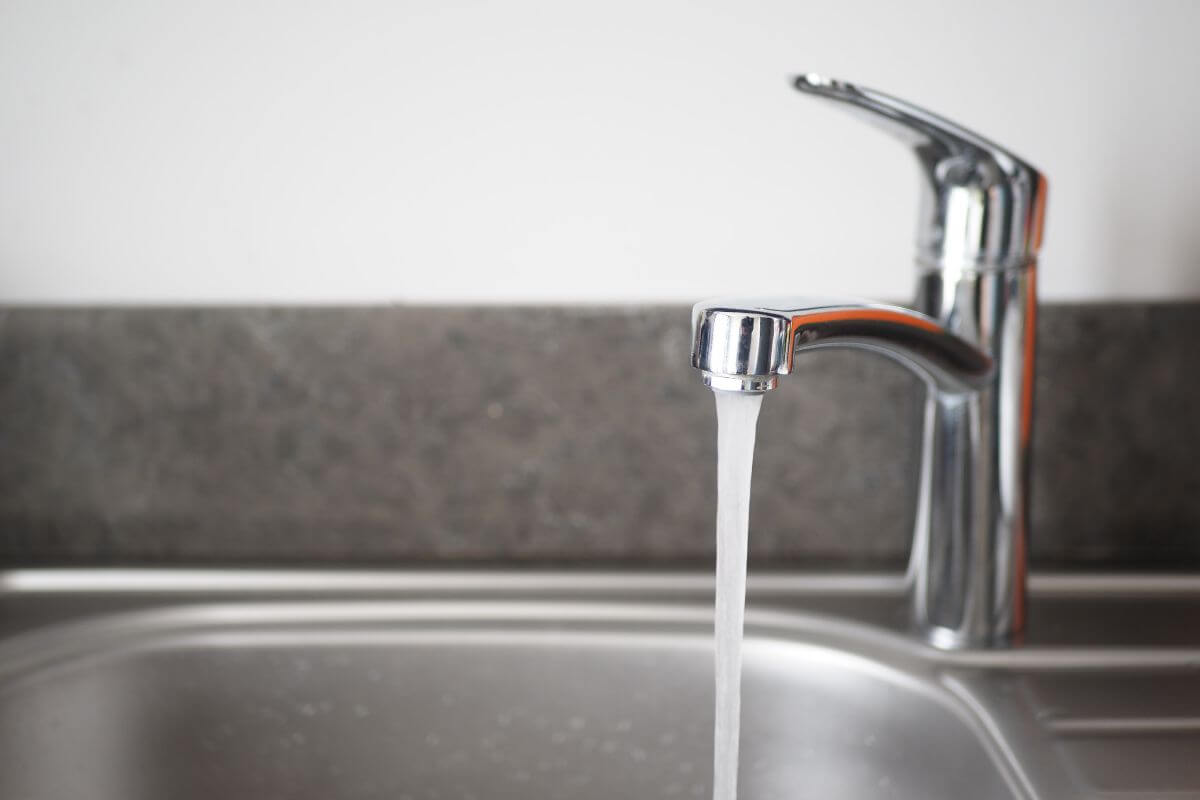
The Public Water Supply Bureau, a division of the Montana Department of Environmental Quality (DEQ), oversees the safety of drinking water. Aligned with the federal Safe Drinking Water Act, their guidelines apply to public water systems, including cities, towns, water districts, subdivisions, and businesses.
Delving into contaminants, we’ve identified some substances that can be present in Montana tap water, such as arsenic, bromodichloromethane, chloroform, chromium (hexavalent), dibromochloromethane, dichloroacetic acid, and hormones.
While these contaminants might sound alarming, it’s important to note that their presence is often within acceptable limits. So, what can you do to further enhance your water quality?
Two popular filtration options are Granular Activated Carbon (GAC) filters and Solid Block Carbon filters. GAC filters, with their porous structure, are effective in removing organic compounds, while Solid Block Carbon filters excel at eliminating heavy metals.
Understanding the specific contaminants in your water can help you choose the right filter for your needs. By referring to your local utility’s water quality report, you can gain valuable insights into your water’s composition and make well-informed choices about filtration systems, if necessary.
Montana Tap Water FAQs
1. What Montana Town Has the Best Quality Tap Water?
In June 2019, the AWWA declared Bozeman, Montana, as one of the top five best-tasting water sources in the United States. Bozeman received recognition as the third-best clean water source in America, marking the first time the city achieved this honor.
2. Is Montana Tap Water Safe?
Montana’s tap water is generally safe due to strict regulations enforced by the Public Water Supply Bureau at the Montana Department of Environmental Quality (DEQ).
These regulations ensure compliance with federal guidelines outlined in the Safe Drinking Water Act, aiming to maintain water quality standards for public water systems across the state.
However, like any region, Montana faces occasional challenges related to contaminants, and the safety of tap water can vary between different locations.
3. Is Montana Tap Water Cold?
Montana’s tap water temperature can vary based on several factors, including the season, location, and source.
Generally, tap water in Montana tends to be colder, especially during winter months or in regions with colder climates. Water from underground sources or mountain-fed reservoirs might be colder compared to water from warmer climates or surface sources.
4. Where Does Montana Get Its Drinking Water?
Montana primarily sources its drinking water from various natural sources like rivers, lakes, reservoirs, groundwater aquifers, and occasionally, surface water treatment plants.
These sources serve as the primary supply for public water systems, cities, towns, and communities across the state.
Like this article? Explore our Montana section for further insights:

